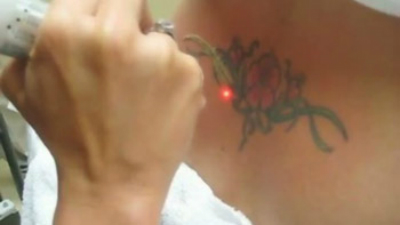But if you ever need to ditch those wrinkles for a smoother skin, or to remove that annoying tattoo or do hair replacement, you will definitely need it.
Internationally, aesthetic medicine is defined as “a branch of medicine that adheres to scientific-based procedures to enhance patients’ satisfaction with their physical appearance.”
In Uganda, aesthetic medical procedures are provided at Avane Cosmetic Clinic and medical spa along John Babiiha avenue, the International Medical Group and Kampala hospital. Below we explore the dos and don’ts of some of the common procedures.
Botox:
Botox is a protein, which when injected into a muscle causes it to become inactive or weakened. The most common uses for this treatment is smoothing of the facial wrinkles of the forehead, between the eyes and the corners of the eye and can also be used in the treatment of excessive sweating.
“Once these motor nerve endings are interrupted, the muscles cannot contract. Therefore, the motion that causes wrinkles in the skin will cease,” Dr Chiraag Kotecha, a dermatologist at Avane Cosmetic clinic and medical spa says. “Approximately three to 10 days after treatment, the skin above the motor muscles becomes smooth and nice.”
The effects of Botox last three to four months depending on the amount of protein injected and lifestyle activity of the patient. Do: For the first couple of years, Dr Kotecha recommends frequent treatments (every four to six months) for facial muscles to get used. Thereafter, treatments would be less frequent until a yearly maintenance is usually all that is required.
Don’t: Never let someone unprofessional administer the treatment on you as they may administer too much or too little of the protein.
Laser Hair removal:
Dr Pranav Pancholi, a visiting specialist in advanced non-surgical aesthetic medicine at Avane Cosmetic Clinic, says laser hair removal is more than just plucking out unwanted hairs. It is a medical procedure that reduces the amount of hair growth through a series of treatments, usually over a period of six to eight weeks and should be performed by a qualified physician.
The energy from the laser travels through the hair and destroys the follicle bump containing the cells responsible for hair re-growth,” explains Dr Pancholi. Patients seek hair removal for almost any body part, from the face, legs, arms, neck, back, chest and underarms. However:
Dos: Dr Pancholi advises one to undergo a skin test first to ensure that there will be no adverse side effects. He also advises one to do enough homework about the dermatologist’s qualifications and former clients. Don’t: Never undertake laser procedures if you are on light sensitive medication. Do not seek laser hair removal for gray hair because laser light only responds to dark pigmented hair follicles.
Tattoo removal surgery:
For the last one year, Mary (not real name) has been ridiculed at work for having a tattoo of a star on her left leg. Although she ignored the scoffing at first, it soon got to her and her promotion opportunities were limited because of her outward appearance.
“I was initially influenced by my peers to have the tattoo, but my hubby keeps telling me he does not like it,” she says, “Because it was affecting the attitude towards me at work, I have decided to come to Avane to remove it although it is quite expensive with every session costing me $50 (about Shs 130,000).”
During treatment, special types of lasers known as Harmony XL lasers are used. Dr Kotecha says these are used break the pigment of the tattoo ink, dispersing it in the skin. Dos: Follow all the pre and post-treatment procedures carefully; ask your dermatologist if anything is unclear.
Don’t’s: “After your laser tattoo removal procedure, avoid any activity which submerges the treated area underwater for an extended period of time,” reads an article
Soaking the skin in water for an extended period of time, slows down the healing process and increases risk of infection.
Source; All Africa




